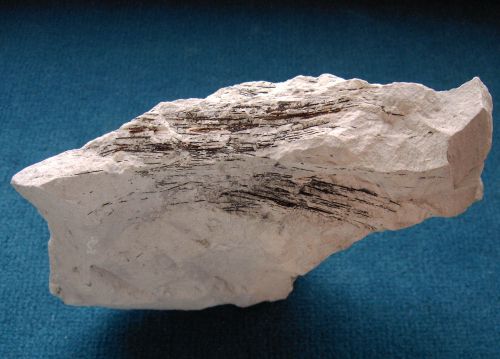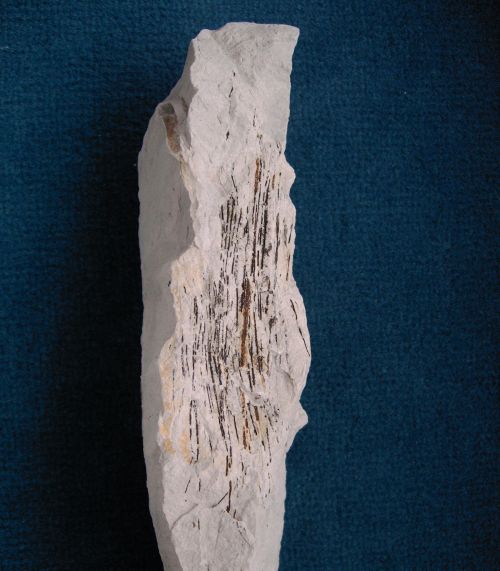

? Hyalonema creatcea
Mehl & Hauschke 1995
Hyalonema cretacea was first described by Mehl and Hauschke (1995) from the Lower Campanian of Coesfeld, Münsterland as a bodily preserved, fossil representative of the Hyalonematidae family. The type specimen consists of a small, incomplete basket and a long root tuft of monactinal basalia.
The specimens shown here represent a root tufts, as they are commonly found in the Upper Campanian of Misburg, but only very rarely in the Lower Campanian of Höver. Their assignment to Hyalonema creatcea is speculative and preliminary, in the absence of more complete specimens.
The length of the basal monactines can reach 100 mm, or more. They are predominatly replaced by iron sulfide, but original, opaline spicules are not uncommon.